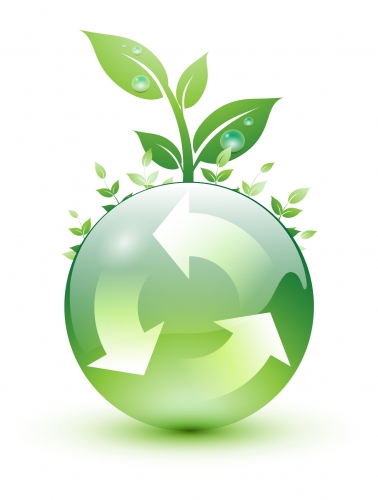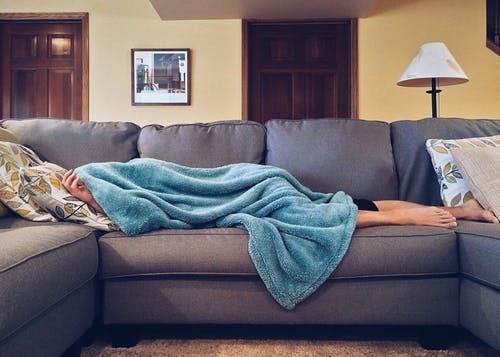Green Living: How to Get Started
 With the recent unveiling of the Tesla Model S, a luxury car that runs purely on electricity, living a green lifestyle has never been more popular. However, owning a Tesla S is a steep price to pay to reduce greenhouse gases, as it costs nearly twice as much as the average car. While most of us don’t live on such a generous budget, there are some simple things we can do to start living green! Let’s take a page from the US Environmental Protection Agency:
With the recent unveiling of the Tesla Model S, a luxury car that runs purely on electricity, living a green lifestyle has never been more popular. However, owning a Tesla S is a steep price to pay to reduce greenhouse gases, as it costs nearly twice as much as the average car. While most of us don’t live on such a generous budget, there are some simple things we can do to start living green! Let’s take a page from the US Environmental Protection Agency:
Reduce—Reuse—Recycle
Reduce
In other words, a good way to start living green is to limit the number of natural resources you use each day, or use them more efficiently. This doesn’t mean you need to move into a grass hut and live solely on nuts and berries. A few common resources you can easily cut back on include gas, electricity and water.
Gas
If owning an electric car is not in your foreseeable future, consider the following questions you can ask yourself before turning on the ignition:
- Is it close enough for me to walk or bike there?
- Do I know exactly how to get where I’m going?
- Do I need to go anywhere else before returning home?
Ditching the car (if the weather permits) is a great way to save gas, money and the ozone layer. Not to mention the several health benefits of walking or cycling a little bit every day. If you need to take your car somewhere unfamiliar, be sure to plot out your course. Getting lost will not only waste time and increase your stress level, but the constant rerouting and u-turning will burn a hole in more than just your wallet. Try to avoid taking unnecessary trips to and from home. If you have no other incentive for this, remember, less driving means less time spent in traffic.
Electricity
Energy-efficient bulbs are a useful and easy investment when going green, but saving electricity involves more than just changing your bulbs and turning the lights off. As our world fills up with more and more electronic gadgets, it’s important that we take charge of how often we use them. Repeatedly using a device such as a tablet or smartphone until the battery dies is one of the fastest ways to shorten the life of the device. Using a device while it’s charging will end up costing you more money in energy bills and is another way to limit your device’s lifetime usefulness. Cutting down on how much you use your gadgets will keep them lasting—and out of landfills—longer.
Water
Purchasing low-flow toilets, and other water-efficient appliances is a great way to reduce your everyday use of the earth’s most important resource. You can just as easily save water by reducing the number of showers or times you flush the toilet throughout the day. That may seem a little gross at first, but when you consider how much water is required for each flush (American standard toilets use 6 gallons of water per flush), and the volume of water used for each shower (25 to 50 gallons), you might just think twice before twisting that nozzle.
Reuse
Think about how many things you throw in the trash each day. This could range from plastic packaging to cigarette butts. Finding reusable alternatives to your everyday disposables will help cut down on landfill costs, as well as damage to the environment. Here are a few items to consider that will help you live green today:
Water Bottle
Not to be confused with bottled water, purchasing a reusable water bottle will help you use—and eventually throw away—less plastic. Buying bottled water might be convenient, but why would you want to pay for something you can get free from any drinking fountain or faucet?
Tote Bag
In an effort to reduce the level of plastic that shows up in landfills, a few states including California have issued a ban on plastic grocery bags. One eco-friendly alternative is to buy a reusable tote bag for all your shopping needs. Many of these totes are large and strong enough to hold most loads. If you’re worried about finding an attractive bag to carry around, several department stores (including Nordstrom and Banana Republic) offer totes at a modest and fashionable price.
Electronic Cigarettes
For those of you who smoke, but would still like to live a greener lifestyle, electronic cigarettes are a more environmentally-friendly alternative to paper cigarettes. The cartridge is reusable, and rather than emitting smoke—which contains toxins harmful to the environment—ecigs release only water vapor.
Recycle
Since elementary school, we’ve been told to recycle. However, recycling may not always be convenient or accessible. If you don’t have a developed recycling program where you live, here are a few places that will fulfill all your recycling needs:
Grocery Stores
Many grocery stores provide receptacles to recycle old plastic grocery bags.
Best Buy
Best Buy is perhaps the best place you can go to recycle anything electronic: used-up batteries, old cell phones, chargers and cables, and even empty ink cartridges for printers.
Green living doesn’t have to be complicated. Just remember these three Rs and you’ll be on your way to a healthier, more eco-friendly lifestyle.
Drew Kobb, in addition to studying civil law, loves long distance running and considers himself a health and fitness enthusiast. His interests range all over the medical field, and Drew highlights that range on his blog, Dr. Ouch. He also has a passion for the environment.
- 6 Precautions To Take When Traveling Abroad To Study - June 25, 2025
- Choosing A Car That Will Stand The Test Of Time - June 23, 2025
- Take Charge of Your Life With These Helpful Tips - June 20, 2025


